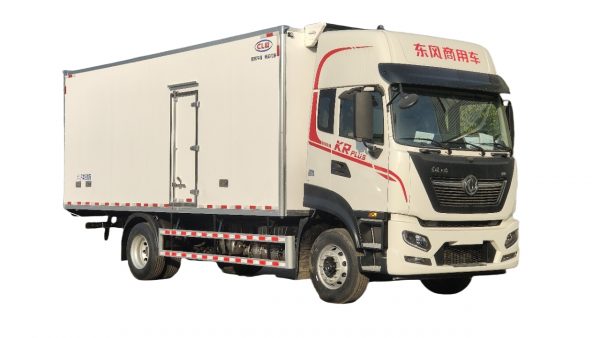Introduction
Garbage trucks are an essential part of urban infrastructure, responsible for collecting and transporting waste to disposal sites. While the primary function of a garbage truck is to efficiently collect and dispose of waste, the exterior design of these vehicles has evolved over the years to incorporate both functionality and aesthetics. In this article, we will explore the evolution of garbage truck exterior design, from its humble beginnings to the modern-day designs that prioritize efficiency, safety, and environmental sustainability.
Early Designs: Functionality Over Aesthetics
In the early days of garbage collection, the design of garbage trucks was primarily focused on functionality rather than aesthetics. These early models were often utilitarian in appearance, with a simple boxy shape and minimal design elements. Comparing gas vs diesel engines in work trucks of these designs was to maximize the capacity of the truck for collecting waste while ensuring ease of operation for the sanitation workers.
One of the key features of early garbage truck designs was the use of rear-loading mechanisms, which allowed workers to manually load waste into the truck from the back. This design was efficient for collecting waste from residential areas but required significant manual labor and was not the most efficient method for large-scale waste collection.
As urban populations grew and waste volumes increased, there was a need for more efficient and automated garbage collection methods. This led to the development of side-loading and front-loading garbage trucks, which revolutionized the industry by allowing for faster and more efficient waste collection.

Modern Designs: Efficiency and Safety
Modern garbage truck designs have come a long way from the simple and utilitarian models of the past. Today, garbage trucks are designed with a strong emphasis on efficiency, safety, and environmental sustainability. These vehicles are equipped with advanced technologies and features that make waste collection more efficient and environmentally friendly.
One of the key design elements of modern garbage trucks is the use of automated loading mechanisms, which eliminate the need for manual labor and improve the speed and efficiency of waste collection. Side-loading and front-loading mechanisms are now commonly used in garbage trucks, allowing for faster and more efficient waste collection in urban areas.
In addition to improved loading mechanisms, modern garbage trucks are also equipped with advanced safety features to protect both sanitation workers and other road users. These features may include backup cameras, proximity sensors, and automatic braking systems to prevent accidents and improve overall safety on the road.
Furthermore, the exterior design of modern garbage trucks is often sleek and aerodynamic, with a focus on reducing fuel consumption and emissions. Manufacturers are increasingly incorporating lightweight materials and fuel-efficient engines into garbage truck designs to minimize environmental impact and improve overall sustainability.
Aesthetics and Branding
While functionality and efficiency remain the primary considerations in garbage truck design, there is also a growing emphasis on aesthetics and branding. Many municipalities and waste management companies now see garbage trucks as an opportunity to showcase their commitment to sustainability and environmental stewardship.
As a result, some garbage trucks feature eye-catching designs, vibrant colors, and custom graphics that reflect the values and branding of the organization. These visually appealing designs not only serve as a form of advertising but also help to foster a sense of community pride and engagement in waste management efforts.
Furthermore, the exterior design of garbage trucks can also play a role in enhancing the visibility and safety of these vehicles on the road. Bright colors, reflective strips, and clearly visible signage can help to improve the visibility of garbage trucks, especially in low-light conditions or busy urban environments.
Future Trends in Garbage Truck Design
Looking ahead, the future of garbage truck design is likely to be shaped by advancements in technology, sustainability, and urban planning. Manufacturers are increasingly exploring alternative fuel options, such as electric and hybrid engines, to reduce emissions and improve environmental sustainability.
Furthermore, the rise of smart city initiatives and connected technologies is likely to have a significant impact on garbage truck design. Intelligent sensors, route optimization algorithms, and real-time monitoring systems can help to improve the efficiency and effectiveness of waste collection operations, leading to cleaner and more sustainable cities.
In terms of aesthetics, we may see a greater emphasis on modular design concepts that allow for customization and personalization of garbage trucks. This could include interchangeable panels, customizable graphics, and integrated LED lighting systems that enhance visibility and brand recognition.
Conclusion
The evolution of garbage truck exterior design reflects a broader shift towards sustainability, efficiency, and innovation in waste management practices. From the simple and utilitarian designs of the past to the sleek and sophisticated models of today, garbage trucks have come a long way in terms of functionality, safety, and aesthetics.
As we look towards the future, it is clear that garbage truck design will continue to evolve to meet the challenges of urbanization, environmental sustainability, and technological advancement. By prioritizing efficiency, safety, and aesthetics, garbage trucks will play a crucial role in creating cleaner, greener, and more livable cities for generations to come.
